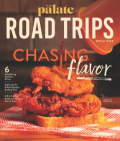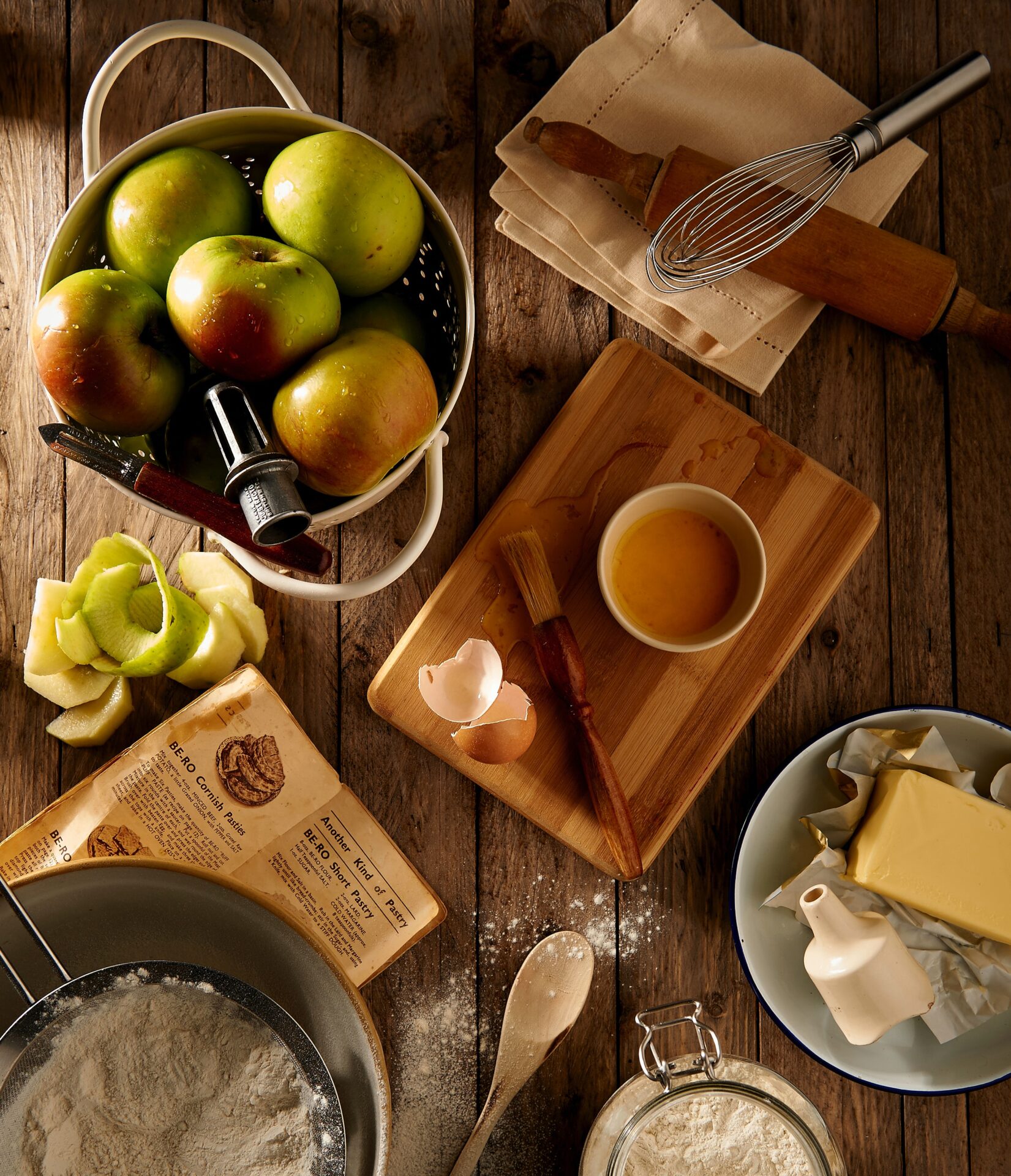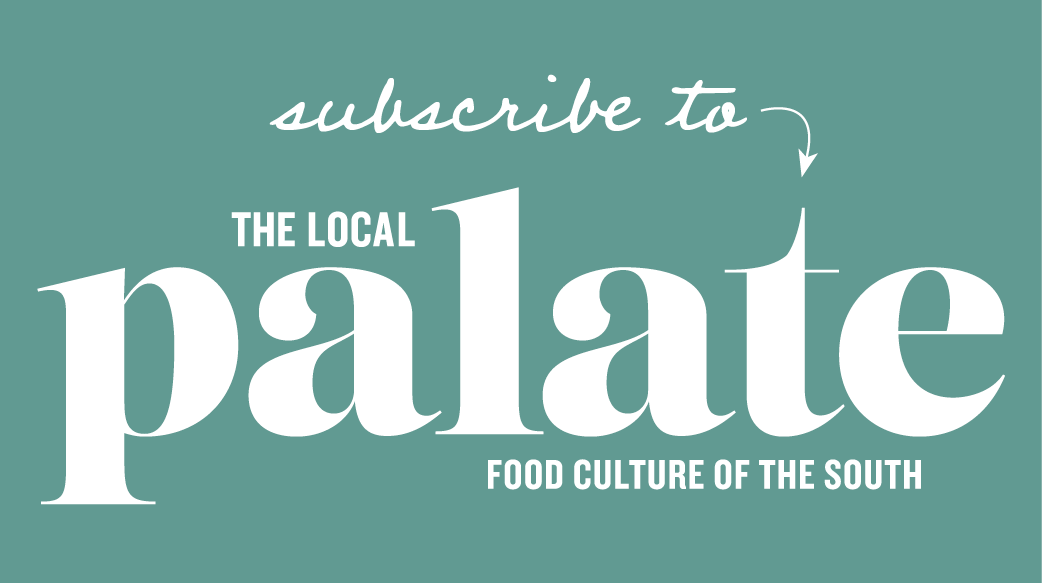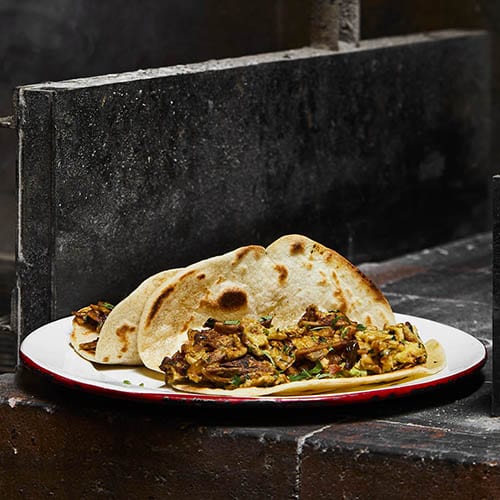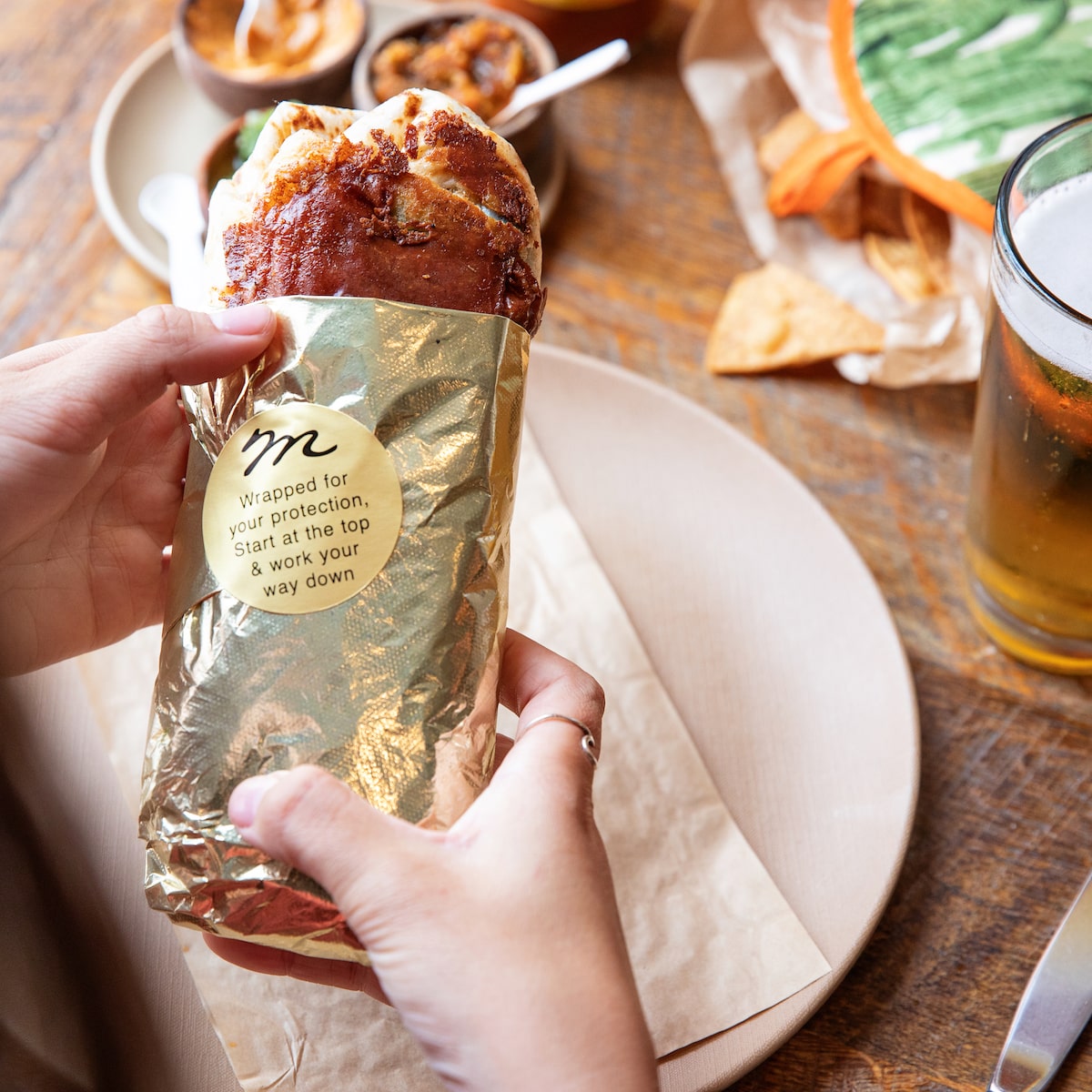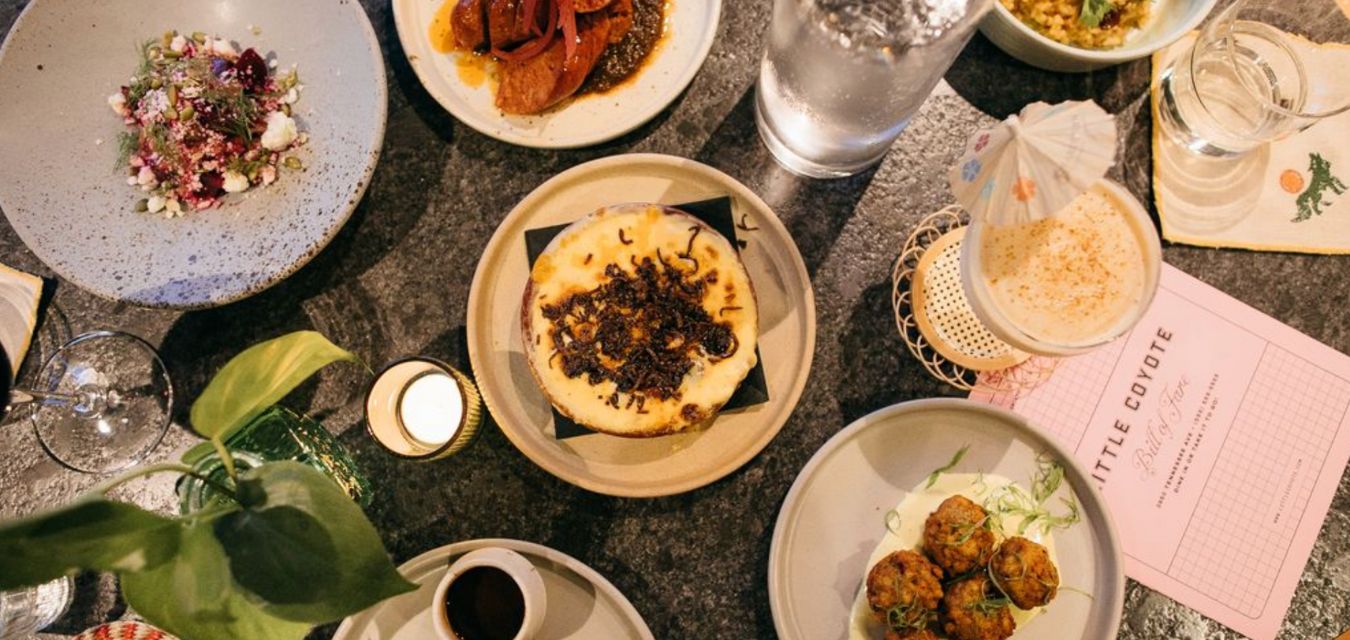Chef Julio Hernadez has created his own version of authentic cuisine at his Nashville restaurant
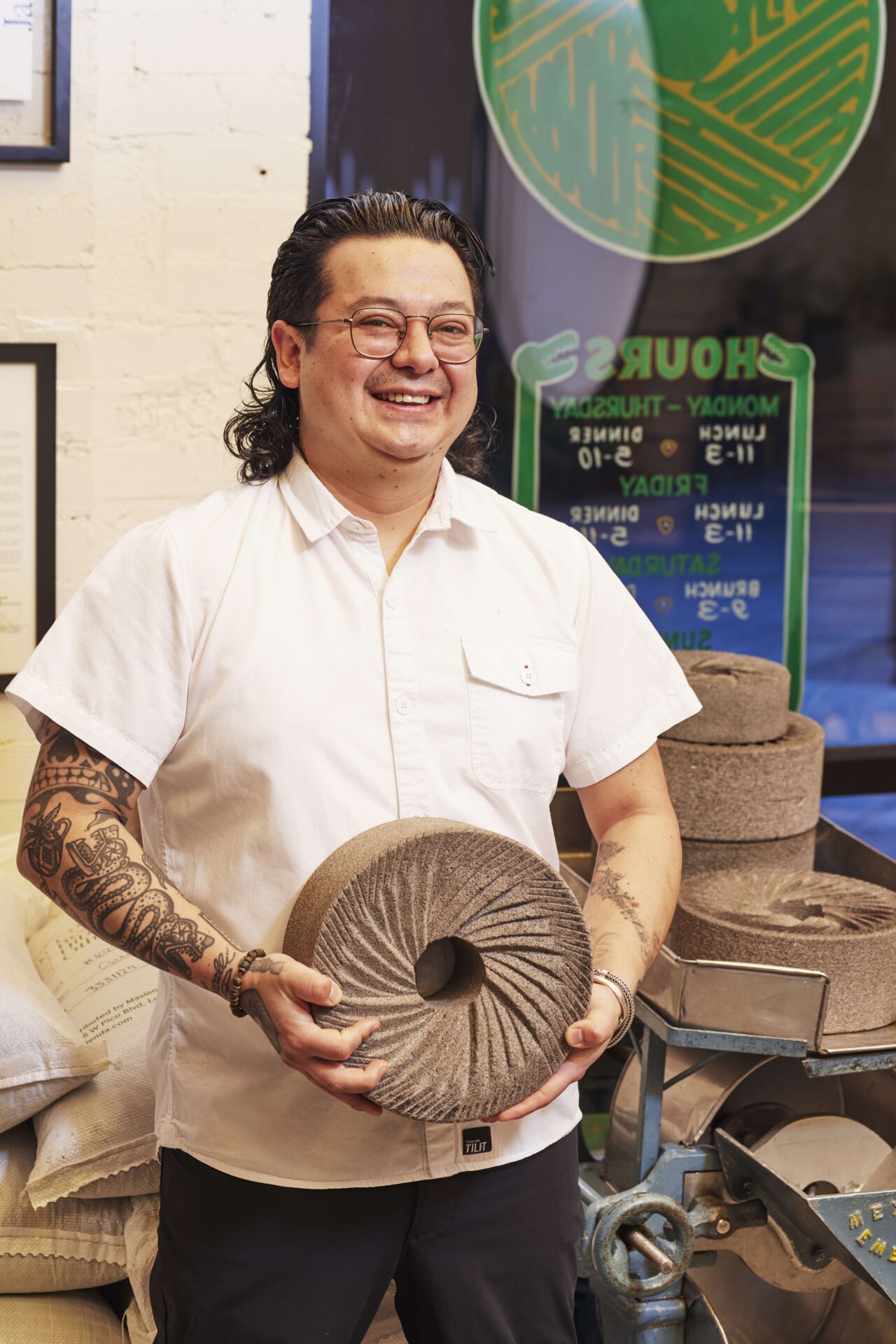
A
nything grown in soil tells the story of that place, whether it’s grapes grown in the hot sun and cool fog of California, tomatoes grown in the rich soil of Tennessee, or a peach plucked from a tree in South Carolina. Similarly, chefs pick up the flavors and influences of the places where they grow. For Julio Hernandez, chef-owner of Maíz de la Vida, his story is peppered with influences from the Bronx, New York, to Tlaxcala, Mexico, and back, and now from his current home in Nashville, Tennessee. Each place left its mark on a young chef who was eager to learn—but it was in Nashville where Hernandez finally learned to cook Mexican food, and where he began to tell the story of his life through corn.
The loud hum of the molino, the stone fiitted grinding mill, mingles with laughter and the sound of Dangerdoom playing over the restaurant sound system one early morning at Maíz de la Vida, the restaurant that’s opened a portal to Mexico in Nashville. It’s a masa-making day in the kitchen, which means executive sous chef Obed Vallejo is in the kitchen before the sun is up, milling corn into the dough that will become part of almost every dish in the restaurant, from tortillas to tamales. This process, called nixtamalization, is a time-consuming method in which kernels are cooked and soaked in an alkaline solution of water and “cal” (short for calcium hydroxide) until they are soft and malleable. It’s then ground into masa, the dough that forms the basis of Mexican cuisine. Corn, and therefore masa, is the lifeblood of Maíz de la Vida, whose name directly translates to corn of life.
And in Mexico, corn is life, a sentiment that is deeply entrenched in Mexican identity. It’s believed to have originated in Central America about 9,000 years ago, cultivated by indigenous peoples who eventually spread it into North and South America. According to the Mayan creation story, gods created humans out of a dough of yellow and white corn.
For Hernandez, opening Maíz de la Vida has been a lifetime in the making. It began after his first few months of life in New York, when his mother was killed by a drunk driver on a Bronx sidewalk. His father sent him to live with family in the Mexican state of Tlaxcala, which means “land of bread or corn” or “land of corn tortillas.”
“I’m from Tortilla Land,” he says with a laugh. “It all makes sense.” Hernandez lived there until he was 11, which he considers a deeply formative period of his life. He and his family grew and harvested corn on their plot of land, drying it to sell to the community in sacks just like the ones he now has shipped to Maíz de la Vida. When the sacks of corn were moved into the house to keep dry, he and his brothers gave up their bedroom until the corn was sold, gradually regaining living space as it went. Each day after school he returned home to warm tortillas and salsa from the wood-fired comal.
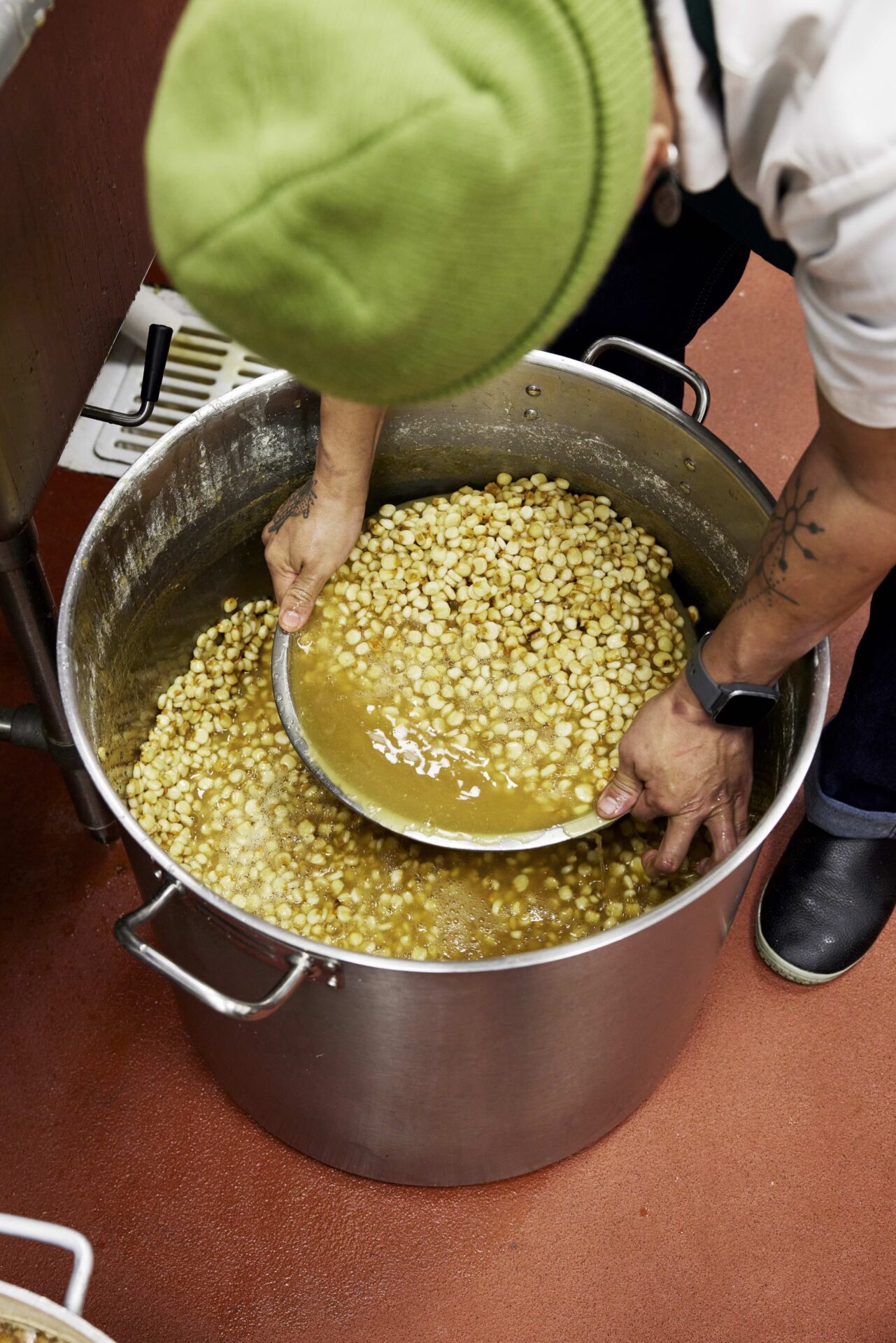
Eventually Hernandez returned to New York to live with his father, though that was its own new lesson. “While I was in Mexico, they called me el guero, which means ‘white boy.’ I was the whiteboy in Mexico; then suddenly, at 11, I was the Mexican kid in the Bronx.” That cultural dichotomy has continued to live on within Hernandez. “Am I American or am I Mexican? You go to one country and you get pushed to the otherside, you know. You go to this country and you get pushed back to the other side. So you’re in the in between, which explains a lot of what’s going on [at Maíz de la Vida].”
At 14, Hernandez took his first restaurant job as a dishwasher in a Nepali restaurant in the Bronx. At 16, he hopped on the subway and found himself on Restaurant Row in Manhattan. He walked into Lidia and Joe Bastianich’s restaurant, Becco, where he was hired as a busboy. “I was the worst server they ever hired,” Hernandez says with a grin. “Because, even though I’m very personable, I was always in the kitchen. It wasn’t like I was a bad server; I was just in the wrong part of the restaurant.” He quickly found his way to the kitchen at Becco before working at Spice Market, chef Jean-Georges Vongerichten’s buzzy restaurant in the Meatpacking District. Spice Market was where Hernandez truly cut his teeth in the New York restaurant scene, working grueling hours in a fine-dining kitchen, working with luxury ingredients, and fully immersing himself in the late-night lifestyle of a line cook.

But then, at 21, with a young family of his own, Hernandez was looking for a change from the pressure and temptations of New York. He took a gamble on Nashville, where his brother had just bought a house. Once there, he struggled to find restaurants that interested him or that were impressed with his New York City resume. Nashville’s food was, at the time, focused on a very specific brand of Southern cuisine: Dishes like pecan-crusted catfish, maple butter tenderloin, and Jack Daniel’s sauce over pork or trout were headlining menus. Then he discovered country club life, landing a chef job at a club with an enormous shiny kitchen and the funds to provide outside education. “I learned my Southern cooking there,” says Hernandez. He quickly learned the foundations, from biscuits to meatloaf and squash casserole, followed by educational weekends at chef summits where he studied chocolate making and sous vide.
But there was still a gap in his education: Mexican food. “My whole career was cooking Italian, French, and Asian food, because that’s what pays the bills,” says Hernandez. He applied for a job at a taqueria, despite knowing almost nothing about the cuisine. “Little did the owner know that I had no idea how to make salsa,” he says. “Every Mexican cook can relate to this: We Mexican cooks, males, don’t know how to cook Mexican food because our moms and grandmothers make it for us. The Mexican cooks always make the pasta, the hollandaise, and the burgers.”
MAÍZ TO MASA
Tortilla making relies on a variety of factors: the corn, the water, the molino, the quality of the cal, the weather. It requires a little bit of science, a little bit of magic, and quite a bit of skill. There is no manual, says Hernandez. “There’s no recipe. You have to become a scientist with the [calcium hydroxide]; you have to understand the water you’re working with and the over 200 types of corn you can use. You also have to become an electrician to understand your molino’s horsepower and an engineer to understand maintenance and gear. If your tortilla machine breaks, there’s no tortilla.com that can come and fix your tortilla machine.” The corn is shipped in large bags from purveyors like Tamoa or Masienda who work with small farms in Mexico. It’s cooked in an alkaline solution with calcium hydroxide and soaked overnight to hydrate the kernels. It’s then ground through the teeth of sharpened volcanic stones inside the molino, resulting in a fine dough with a texture loosely comparable to playdough. The masa has to be kneaded enough to develop elasticity and make sure it’s fully hydrated. “My mother told me, ‘You have to blow your palm [after you touch the masa] and it should feel wet like the breeze of the sea.’”
Despite the learning curve, Hernandez got the job and dove headfirst into the world of salsas, tortillas, and Mexican techniques. Then the pandemic hit. Business was booming at the taqueria, which had a to-go window and excellent margaritas, but Hernandez saw it as an opportunity to go out on his own, capitalizing on home cooks’ renewed enthusiasm. He gave a month’s notice at the restaurant and used his savings and stimulus check to buy four bags of corn and a molino. It was a risky proposition: Hernandez needed to make and sell every bit of that masa in order to make enough to fund the next batch, much less pay his bills. Instagram was the vehicle for Maíz de la Vida’s first sales, a pandemic-era technique that delivered in spades. The orders began to pour in as Nashville caught wind of handmade tortillas that were delivered within a 30-mile radius. At one point Hernandez was staying up all night making tortillas and driving them around town all day. A stand at the farmer’s market was the next step for selling his tortillas in bulk, and it was wildly successful. But selling tortillas felt like only one part of the puzzle; Hernandez needed more to share the story of masa—and raise a culture around it.
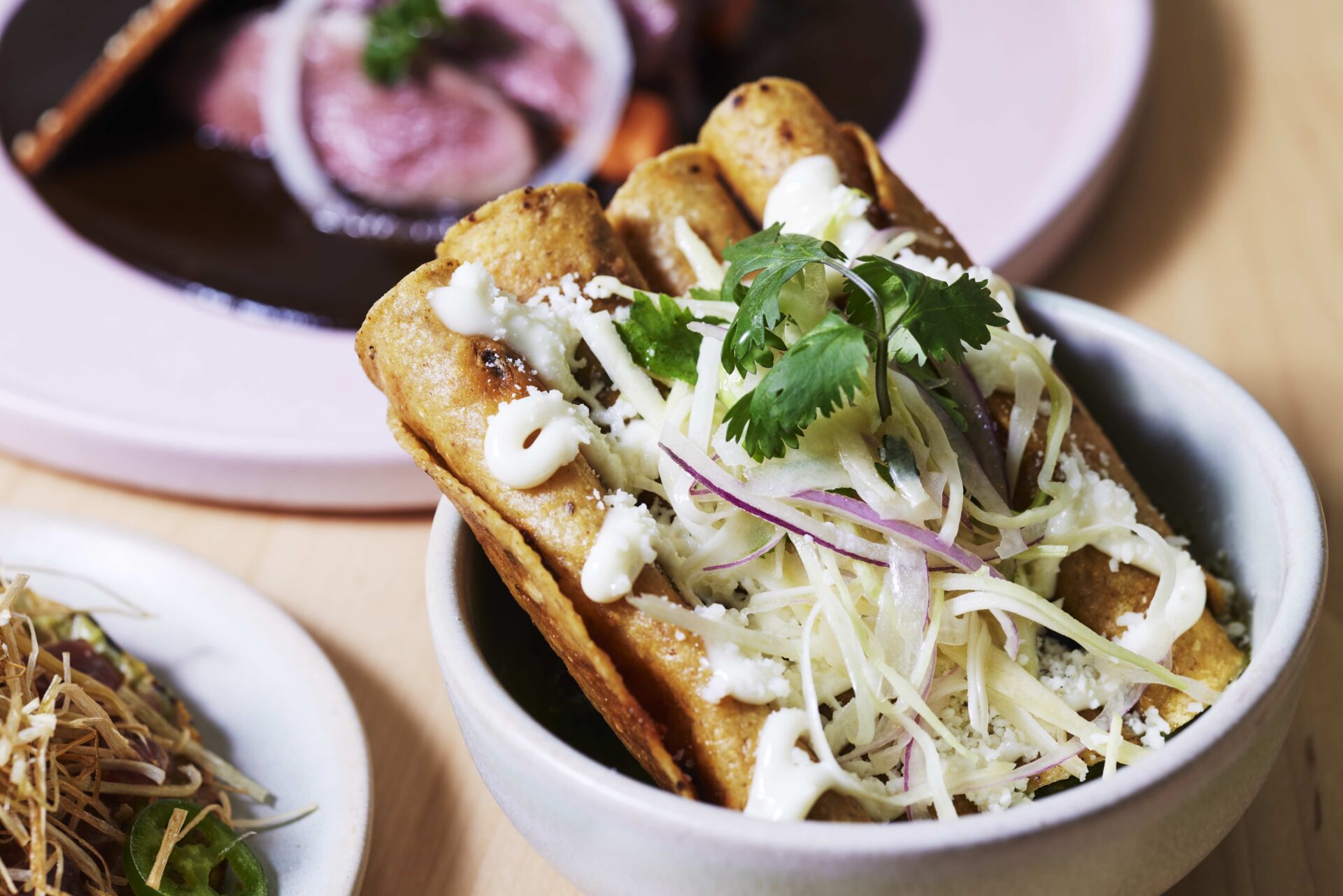
So, he bought a food truck from his brother, who owns a Colombian restaurant in town, and parked it outside an East Nashville bar called Chopper Tiki. Lines formed as word got out about Hernandez’s crisp wagyu-filled quesabirria, tacos, and quesadillas. Next came a tortilla shop in a strip mall in North Nashville serving as a commissary for the truck, and selling tortillas, salsas, and lunch to-go. And then: a James Beard nomination and an appearance on Netflix’s Somebody Feed Phil, a show with millionsof viewers around the world.
“All I wanted was for people to eat the good tortillas; I wanted to be a tortilla manufacturer,” says Hernandez. “But once I got going, I understood that that was not gonna work.” Suddenly, he says, every tourist visiting Nashville was coming to the taco truck, some eating a taco for the first time ever. “I realized I was being foolish by thinking I could do this, just have a tortilla business without really showcasing Mexican food.”
That’s when the idea for a brick- and-mortar restaurant where the team could serve composed plates—like its complex duck mole negro with warm tortillas—started to take shape. The result is a cuisine unique to Hernandez’s experience and vision.
“Could I make authentic Mexican food in Nashville?” asks Hernandez. “I don’t think so. It’s impossible. It’ll be just like saying that you make beautiful burrata cheese in Nashville that is authentic to Italy. It is not.” So, he’s making good Mexican food for the people in the South. That includes a bowl of grits absolutely packed with corn flavor, punched up with tomato gravy and a queso tostada—a very different version than what’s served on typical Southern tables.
THE TENN-MEX CONNECTION
Currently, the heirloom corn that goes into Maíz de la Vida’s masa is sourced from farms in Mexico, but Hernandez and his crew are working to secure their own local source of corn from the restaurant through a partnership with Caney Fork Farms in Carthage, Tennessee. The plan is to grow heirloom corn for the restaurant. “Corn is the only grain crop that’s indigenous to North America. Now, it’s an industrial agricultural monoculture crop, but it is the native grain grass for our continent,” says Caney Fork farm director Asher Wright. “It’s a cool crop because of the cultural relevance that goes way back to indigenous communities in the way that cereal grains do not, at least on our continent.” Wright sourced different heirloom varieties that both had a chance of cultivation in Tennessee’s climate and most closely mimicked the taste and consistency of Mexican corn. The team finally landed on Cherokee White Flour corn, a variety that traces its genetics from the Cherokee tribes in Tuckasegee, North Carolina, all the way back to northeastern Mexico. Though the first year’s yield was hampered by weather and poor growing conditions, the team plans to try again, mixing in different races of corn and techniques.
The restaurant came to life through a partnership with Andy Mumma, the entrepreneur behind Nashville’s Barista Parlor coffee shops and Chopper Tiki, the bar where Maíz de la Vida’s food truck is now permanently parked. “What initially got me excited about Julio and his food was keeping the heritage of the nixtamal process alive and bringing that to Tennessee,” says Mumma. “He’s showing how amazing and important this [process] is to a whole culture. On top of that, everything he makes is so good; he’s so great at layering flavors.”

They signed a lease in a historic building in the Gulch neighborhood, just south of downtown. It’s located across from Arnold’s, a legendary Nashville meat-and-three that has been serving the traditional foods of Nashville for decades: fried chicken, whipped potatoes, roast beef and gravy, yeast rolls. It’s a juxtaposition that says a lot about the growth of the city’s dining scene. “I think that’s why Julio’s been so successful: He’s introducing a new Mexican cuisine to Nashville,” says Mumma. “The restaurant is probably something that couldn’t have opened four years ago without having served Nashville out of the truck first.”
The first molino Hernandez purchased now sits in the beautiful, modern dining room of Maíz de la Vida, a reminder of where it all started. Mumma took the lead on the restaurant’s design, adding colorful clay pots from local Mexican American artist Cesar Pita and painting the ceiling a bright shade of yellow. To drive home the sacred nature of corn in the restaurant space, Mumma wanted to create an homage using heirloom corn itself. He pulled in the whole team to create a large-scale mural on the wall behind the bar depicting a temple with a sunset behind it. The temple and its rays of sunshine are made of individual corn kernels from six different varieties of heirloom corn. Mumma estimates that there are more than 400,000 kernels in the mural, each one placed there by hand; six different people, including Mumma, Hernandez, and Hernandez’s mother (she was the best at it, according to Mumma) worked on it for months.
The restaurant is now open for lunch, dinner, and weekend brunch with a fullbar showcasing mezcals and tequilas. And it’s getting Hernandez’s message across with dishes like carne asada with a green peppercorn salad, a tuna tostada topped with a mountain of fried leeks, and flautas stuffed with potatoes and cheese and soaking up a pool of salsa verde.
“The only obstacle that we’ve had to overcome is that this isn’t the taco truck in restaurant form,” says Mumma. “It’s another evolution of Maíz.” And that evolution, driven by the energy and ambition of Hernandez and his team, is far from finished.
keep reading
At the Table
A Look at Texas’ Breakfast Taco Tradition
Breakfast tacos wrap eggs in tortillas with everything from chorizo to regional specialties like smoked brisket, nopales, and wild game meats.
First Look
First Look at Minero’s Mexican Menu
Charleston’s favorite gourmand burrito spot Minero has found a new home on Johns Island. Chef Shamil Velazquez shared his process in creating the new menu.
Dining Out
9 Noteworthy Tennessee Restaurants | Listen
Whether you’re looking for a sweet treat or a southern meal, we’ve got you covered with these 9 Tennessee restaurants that you can’t miss.
